This post may contain affiliate links. Please read our disclosure policy.
A professional pastry chef’s vanilla Pastry Cream Recipe. Crème Pâtissière is one of the most versatile recipes in the pastry box! Use it to fill tarts, cream puffs, éclairs and more!
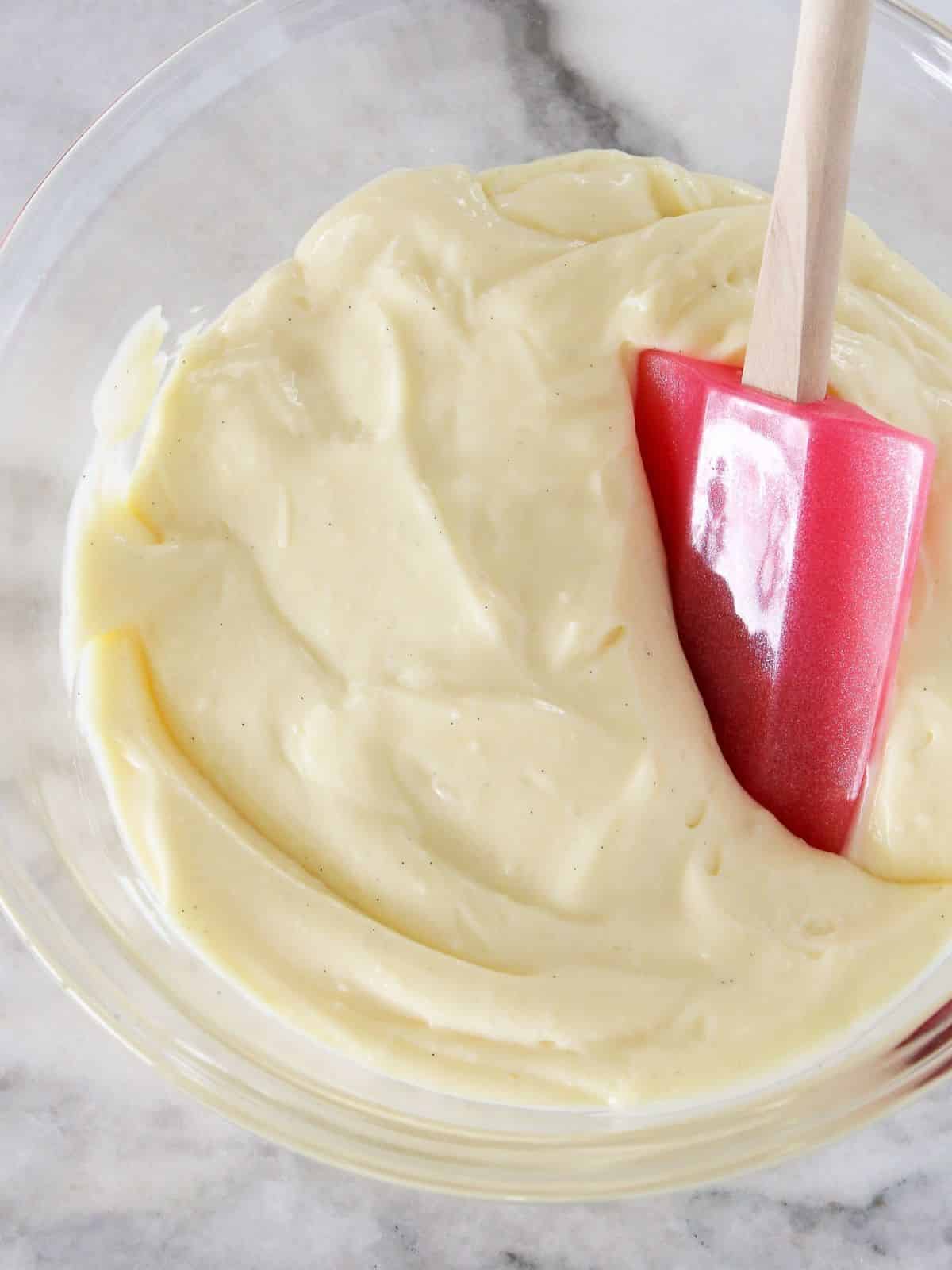
Pastry cream is a foundational pastry recipe! Not only can you completely change the flavor of the custard by infusion or addition, but you can also change the flavor of a whole dessert! Crème Pâtissière can be found in so many desserts in different styles!
Use it as the filling for mille-feuilles, banana cream pies, and pithiviers (mixed with almond cream). You can lighten it with whipped cream for crème légère and use it as a filling for fruit tarts, eclairs, Boston cream pie, crème Chiboust, and so much more! If you finally broke down and bought some vanilla beans (trust me, you deserve it), try more vanilla bean recipes like crème anglaise, vanilla bean crème brûlée, vanilla bean ice cream, or vanilla bean marshmallows! Allow no vanilla bean to go to waste.
Why This is the Best Pastry Cream Recipe!
- A Pastry Chef developed recipe. Pastry cream is one of the foundation recipes in a pastry chef’s handbook. This recipe was developed by a pastry chef for the perfect texture, consistency, and easy adaptability.
- Customize the flavor! Not only is this recipe easily scalable, but there are endless options for what can be done with pastry cream, from adding chocolate or another flavoring to infusing the milk with spices or fruit.
- Perfect ratios of sugar, eggs, and cornstarch for the perfect texture. Just the right amount of sugar for the pastry cream to have a beautiful texture and not be overly sweet. The eggs add the fat and the thickening power for silky pastry cream. The cornstarch helps hold everything together to prevent separation.
Professional Tips for Making Pastry Cream
- Divide the sugar between the boiling milk and the eggs. The sugar helps keep the milk from scorching and protects the eggs when tempering in the boiling milk. The amount that goes in each isn’t that serious; just measure once and then eyeball half in each!
- Grab your favorite whisk, and don’t stop stirring. We all know I have my favorite whisk, and I wouldn’t make pastry cream without it. Between blanchiring the eggs, tempering the eggs, and cooking the pastry cream, there is a lot of whisking!
- A heavy-bottom pot will help prevent the milk from scorching. A heavy bottom pot will give you more control and add an extra layer of protection while waiting for the milk to boil.
- Read the recipe, have all the equipment ready and ingredients scaled before starting. I like to be prepared when making stirred custards like pastry cream and lemon curd. They are easy but do require moving fluidly between steps.
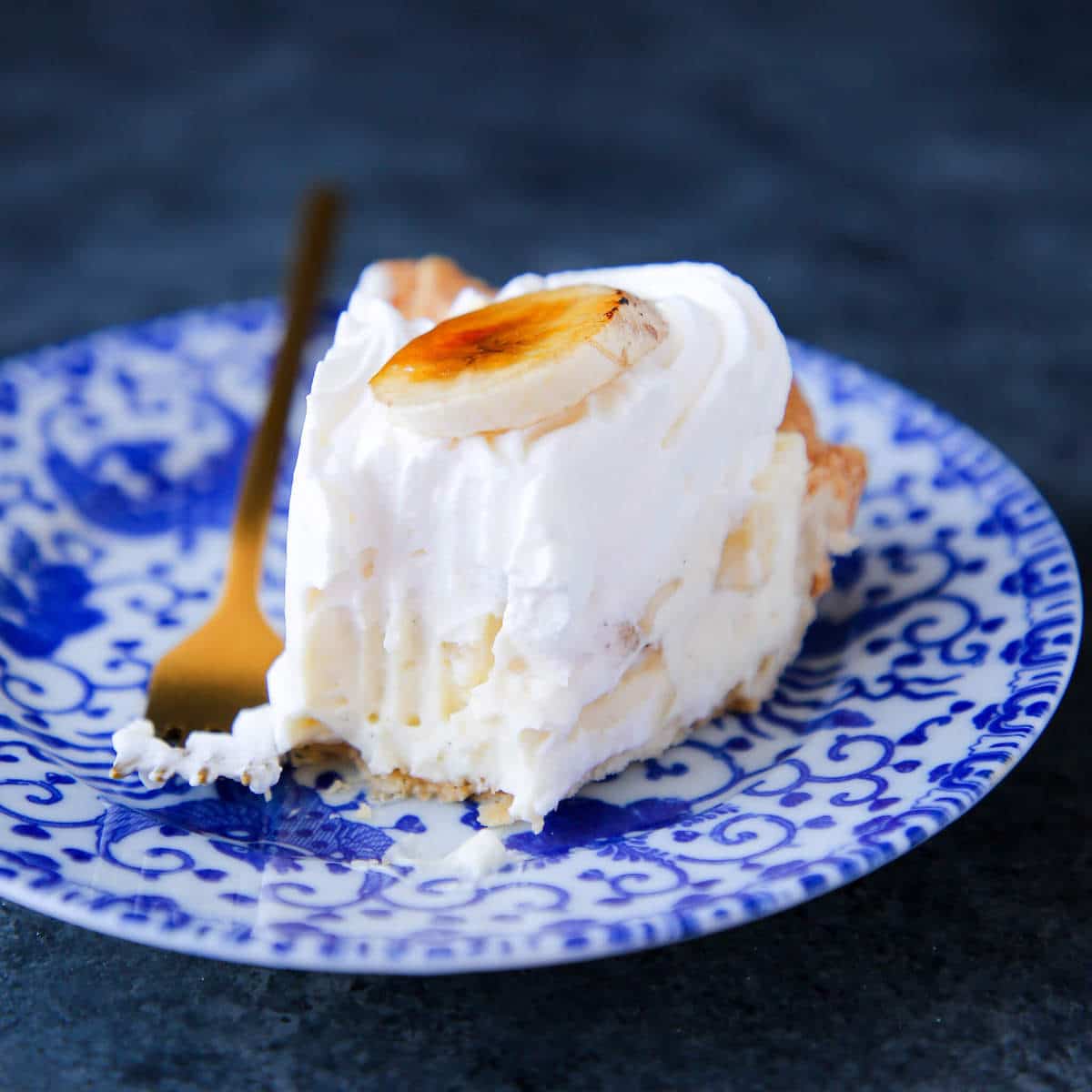
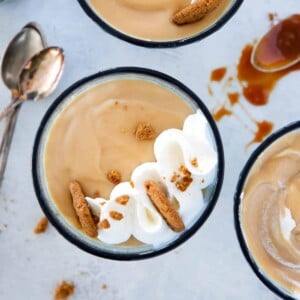
Ingredients
- Whole Milk: Milk is the liquid in pastry cream. The fat adds flavor but isn’t essential like it is in some recipes, so feel free to use your favorite alternative or lower-fat milk.
- Vanilla Bean: Vanilla beans are one of the most expensive ingredients on Earth, but they add an unmistakable flavor. Scrape out the seeds to use now and save the pods for infusing in ice cream, anglaise, or vanilla pudding. You can also make vanilla sugar with the pods.
- Sugar: Sugar has many functions in this recipe. It adds sweetness, protects the milk from scorching, and protects the eggs from the hot milk when tempering.
- Large eggs: The egg in a stirred custard is integral to thickening the custard. Whisking it first with the sugar protects it from the heat.
- Egg yolk: Egg yolks in a stirred custard are also thickeners like whole eggs, but they add more fat than whole eggs without the added moisture from the whites. This makes a thick, rich custard. Too many yolks will make the pastry cream taste “eggy.”
- Cornstarch: Cornstarch is a thickener like eggs, and it helps bind all the ingredients together when cooked.
See the recipe card for full information on ingredients and quantities.
Variations
- Flavor by infusion: Infuse the milk with whole spices like cinnamon sticks or cardamom seeds, or experiment with fresh ginger or lemongrass.
- Flavor by adding ingredients: Another easy way to change the flavor of pastry cream is by adding ingredients at various stages. You can pour the hot pastry cream on chopped chocolate for an easy chocolate pastry cream, or you can add matcha powder to the milk prior to cooking like I did on Beat Bobby Flay to win the first round! Be mindful of ingredients you might have to strain out later, such as lemon zest for lemon pastry cream. I’d lean towards lemon juice instead! Use my easy lemon curd and caramel crème pâtissière recipe as inspiration!
- Crème légère, diplomat, and mousseline: These creme alternatives are great for filling pastries, tarts, and cakes. Crème légère is pastry cream lightened with whipped cream that is used in my banana cream pie recipe. A crème diplomat is pastry cream lightened with whipped cream and stabilized with gelatin, perfect for filling éclairs and tarts. Crème mousseline is pastry cream with whipped unsalted butter for a very silky and rich pastry filling that is perfect for layering in cakes like my classic vanilla cake.
Substitutions
- Use alternative milk: This pastry cream recipe works fabulously with alternative kinds of milk. One of my favorites is coconut milk. You will taste the coconut, so I always lean into the flavor and make it intentional.
- Pastry cream powder: Pastry cream powder is made with cornstarch, vanilla flavor, and additional sugar. It will add another layer of vanilla flavor to your pastry cream. The substitution for cornstarch is 1 to 1.
How to Make Crème Pâtissière
Use these instructions to make perfectly smooth pastry cream every time! Further details and measurements can be found in the recipe card below.
Making Pastry Cream:
Step 1: Scale the milk and the sugar into a medium pot.
Step 2: Split and scrape the seed from half a vanilla bean. Put the seeds in the milk mixture and whisk together.
For a more full vanilla flavor, add the vanilla pod to the milk as well. The pod can also be saved and used in another recipe, like creme anglaise.
Step 3: Heat the milk mixture on medium heat until it comes to a boil.
Step 4: While the milk is coming to a boil, whisk together the eggs and egg yolks to break up the proteins. Then blanchir the eggs with cornstarch. This means whisking the cornstarch and eggs together to lighten them and give them more protection for the tempering process.
Before starting the tempering process, place a kitchen towel under the bowl of egg mixture. It will help keep the bowl in place while you pour the milk and whisk the eggs.
Step 5: Once the milk has come to a bowl time to temper it into the eggs. Slowly pour the hot milk mixture into the blanchired eggs while you continue to whisk the eggs. I prefer to pour all the milk into the eggs to ensure they are adequately tempered.
Step 6: Pour the mixture back into the pot. Continue to cook on medium-low heat and whisk, ensuring you touch the bottom of the pan at all times and scraping the edges to prevent burning and clumping.
If the pastry cream starts to clump, simply remove the pot from the heat and continue to whisk until it becomes smooth again.
Step 7: Cook the pastry cream until it has thickened and starts to boil. Once it starts to boil, set a timer or watch the clock for 1 minute and continue to whisk. It needs to boil for one minute to properly activate the cornstarch and to cook out the starch flavor and mouthfeel.
If the pastry cream has a few lumps, strain it onto your baking sheet through a fine mesh strainer or fine mesh sieve.
Step 8: Pour the pastry cream onto a plastic-lined sheet tray or baking dish. Cover with plastic wrap, poke a few holes, and cool completely in the refrigerator.
How to prepare to use Creme Patissiere:
Step 1: Before you use pastry cream, you need to “refresh it” or “condition” it. This means beating it so that it becomes smooth and silky. This will not remove lumps, but it will create a more pleasant product to eat and work with.
Step 2: Place the desired amount of pastry cream in a stand mixer fitted with the paddle attachment. Beat on medium-high speed until smooth. You don’t want to beat it too long, or the cornstarch will lose some of its hold. This can lead to loose, unruly fillings.

Chef Lindsey’s Recipe Tip
When storing pastry cream, keep it flat. Placing it in a pastry bag or ball jar for storage will cause it to start “sweating,” which is the cream separating. Keeping it flat will slow the process and give the cream a longer shelf life.
Frequently Asked Questions
Store your pastry cream flat on a baking sheet covered in plastic wrap in the refrigerator. This will prevent a skin from forming on top. It will last up to 7 days.
I would not freeze pastry cream. When you defrost the pastry cream, the sugar and eggs will start to separate, and no reconditioning will fix the separation.
As long as you have a pot and bowl that are big enough, the recipe will multiply beautifully. Just be aware that the larger the batch, the more time it will take for the pastry cream to boil. This means more time whisking thick pastry cream, which isn’t impossible, but just be prepared for the workout!
Scaling the recipe down is possible, but I wouldn’t suggest it. First of all, using half an egg and egg yolk sounds like more work than necessary. Also, it is more likely that the smaller amount of pastry cream will burn or have lumps, which can also cause an eggy taste.
Make a lemon berry trifle! Lighten the pastry cream with some homemade whipped cream. Layer with your favorite sour cream pound cake and some fresh berries for an easy dessert!
If you tried this recipe and loved it please leave a 🌟 star rating and let me know how it goes in the comments below. I love hearing from you; your comments make my day!
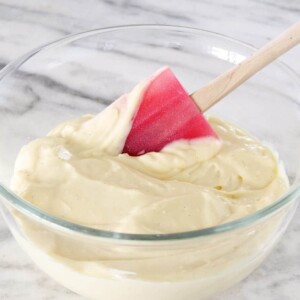
Pastry Cream
Ingredients
- 2 cups milk
- ½ vanilla bean seeded
- ½ cup sugar
- 1 whole egg
- 2 egg yolks
- ¼ cup cornstarch
Instructions
Making Pastry Cream:
- Scale the milk and the sugar into a medium pot.
- Split and scrape the seed from half a vanilla bean. Put the seeds in the milk mixture and whisk together.
- Heat the milk mixture on medium heat until it comes to a boil.
- While the milk is coming to a boil, whisk together the eggs and egg yolks to break up the proteins. Then Blanchir the eggs with cornstarch. This means whisking the cornstarch and eggs together to lighten them and give them more protection for the tempering process.
- Once the milk has come to a bowl time to temper it into the eggs. Slowly pour the hot milk mixture into the blanchired eggs while you continue to whisk the eggs. I prefer to pour all the milk into the eggs to ensure they are adequately tempered.
- Pour the mixture back into the pot. Continue to cook on medium-low heat and whisk, ensuring you touch the bottom of the pan at all times and scraping the edges to prevent burning and clumping.
- Cook the pastry cream until it has thickened and starts to boil. Once it starts to boil, set a timer or watch the clock for 1 minute and continue to whisk. It needs to boil for one minute to properly activate the cornstarch and to cook out the starch flavor and mouthfeel.
- Pour the pastry cream onto a plastic-lined sheet tray or baking dish. Cover with plastic wrap, poke a few holes, and cool completely in the refrigerator.
How to Prepare Pastry Cream for Use:
- Before you use pastry cream, you need to “refresh it” or “condition” it. This means beating it so that it becomes smooth and silky. This will not remove lumps, but it will create a more pleasant product to eat and work with.
- Place the desired amount of pastry cream in a stand mixer fitted with the paddle attachment. Beat on medium-high speed until smooth. You don’t want to beat it too long, or the cornstarch will lose some of its hold. This can lead to loose, unruly fillings.
Video
Notes
Nutrition
Before You Go
I hope you enjoyed this professional chef tested recipe. Check out our other delicious, chef-developed stirred custard recipes, or use it to fill inverse puff pastry next!

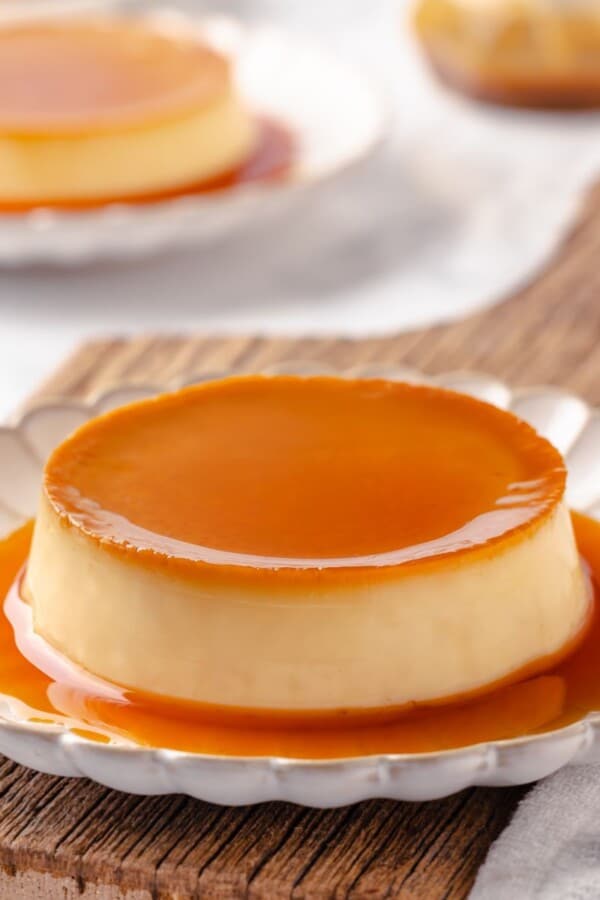
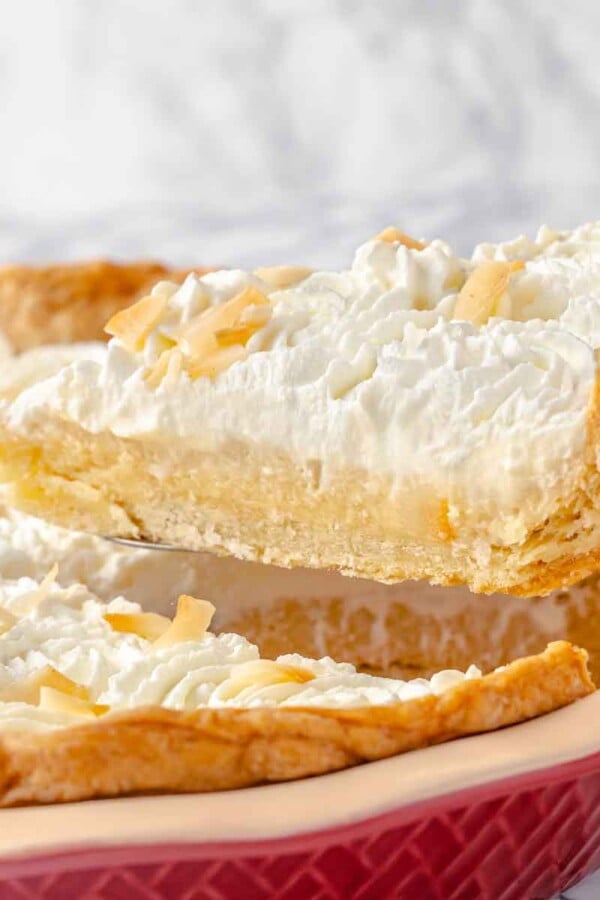
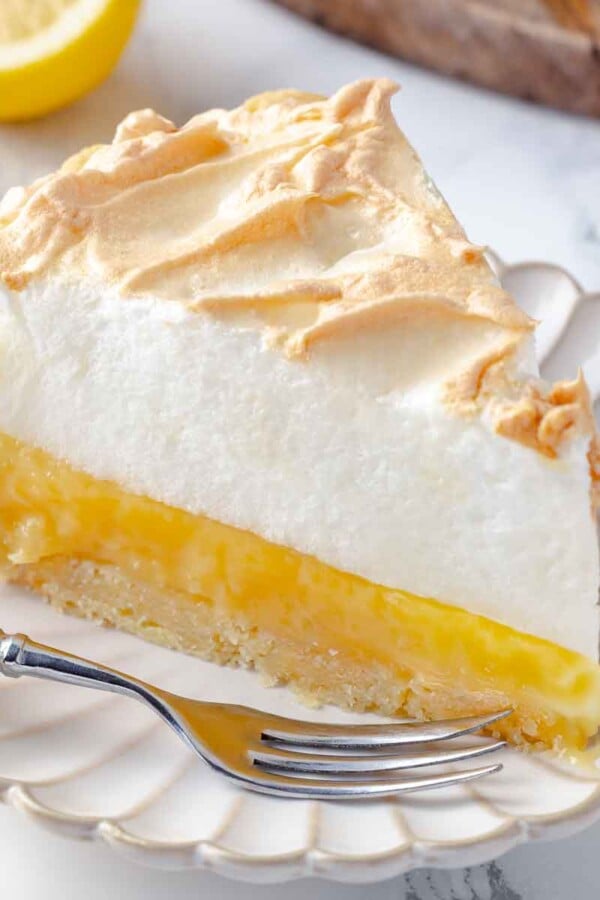
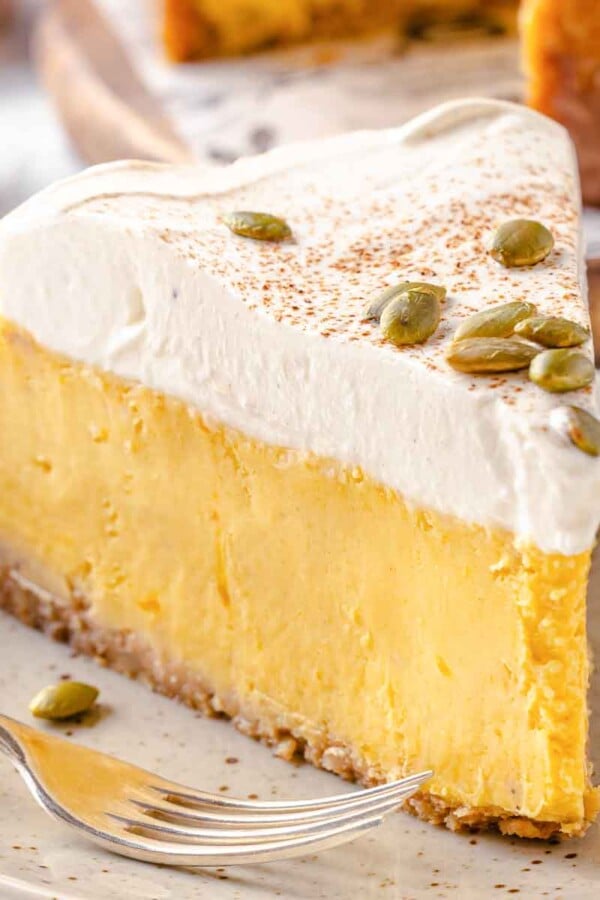








Hi, I haven’t tried this yet but I’m wondering: why do you use the whole egg in this one in addition to yolks? Most recipes I’ve seen for pastry cream are ONLY egg yolks and they use a lot more (usually 6 ish for the same amounts of the other ingredients). Thanks!
Hi Naz! Great question! I dive into this more in the Ingredients section of the post! Enjoy!
I really love these, Thanks for the recipe.
Can’t wait to try it.
I hope you do!! Happy baking!
Would this be good to use instead of vanilla pudding in a banana pudding recipe?
Hi Stevi! Pudding and pastry cream *are* very similar, but they still have ever so slightly different consistencies. If you’re already open to making a pastry cream and want to make a banana pudding as the end goal, you should shoot for my Banana Pudding recipe! It has just about the same ingredients (with the addition of condensed milk) and will give you the absolute perfect banana pudding texture. Can’t wait for you to try it! 🙂
Pastry cream truly is the basis for all things good. Ok, maybe not all things. We’ll go with most things. I absolutely love a good strong vanilla flavor in my pastry cream. These are excellent tips, Lindsey! I’ve never heard the one about cooling it quickly using the sheet pan – ingenious, dear Watson!
I think almond cream is a strong contender for being the basis for all things good! Mmmmm almond croissants mmmm